Finishing, or the application of a protective or refining coating to wood, is the final step in the making of fine wood furniture. The finish on wood furniture can help bring out the grain and elicit a beautiful luster, while also providing protection to moisture, oils and other elements and making it easier to clean.
But which finish is best for you? Each finish has its own benefits and drawbacks, generally balancing beauty with durability and ease of maintenance. Will your furniture be in a high traffic area? Will it be frequently handled? Will it be exposed to liquids, as with a table top? These considerations are the first step to choosing new hardwood furniture with the best finish for your family’s needs.
VARNISH
Naturally heat, water and ultraviolet (UV) resistant (spar varnish specifically), this resin, oil and solvent mixture is both flexible and durable due to its high solids content. Builder Dan Maxham of W.A. Mitchell Fine Furniture in Farmington, Maine is especially attentive to the natural movement of wood. “The wood we use in building fine furniture is constantly either expanding or contracting in response to temperature and humidity.” He uses a variant called conversion varnish on his furniture for its elasticity and forgiveness to varying humidity without cracking. Conversion varnish provides an excellent protective finish. Its drawbacks are that it can be hard to reverse once applied, and harder to refinish. As for its appearance, varnish has a low- or semi-gloss finish, and conveys a hand rubbed look.
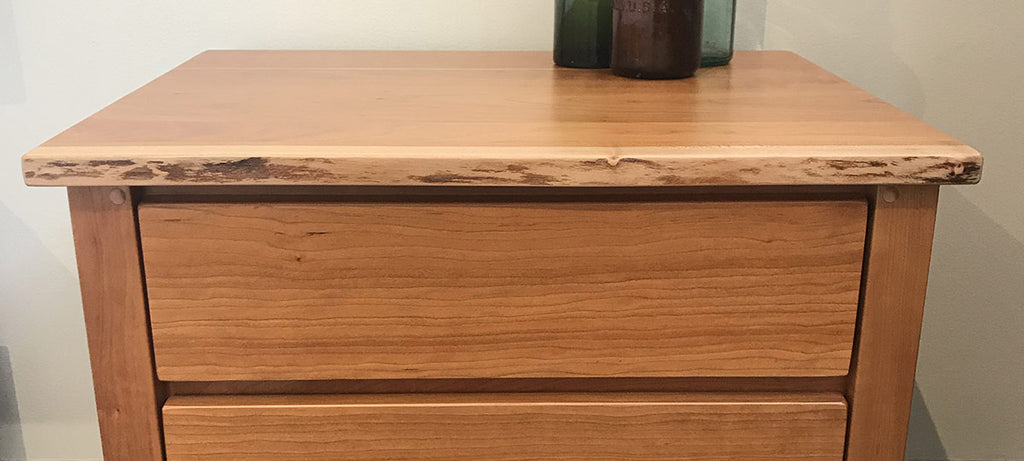
Live edge Acadia night stand, built in cherry with a varnish finish
LACQUER
Lacquer, specifically pre-catalyzed lacquer, is considered by many professional woodworkers to be the best finish for hardwood furniture, in terms of balance between beauty, protective qualities and ease of application and care. Without delving too far into the scientific complexities, pre-catalyzed lacquer uses a catalyst to initiate a chemical reaction that dries even harder than the durable evaporative drying method of traditional lacquer (though even lacquer is not invincible and will still scratch from excessive wear and tear). In addition to abrasion and water resistant properties, lacquer is a thinner finish so it is sprayed on in thin layers. This creates an ultra smooth, clear and natural look, allowing the wood itself to be the star of the show.
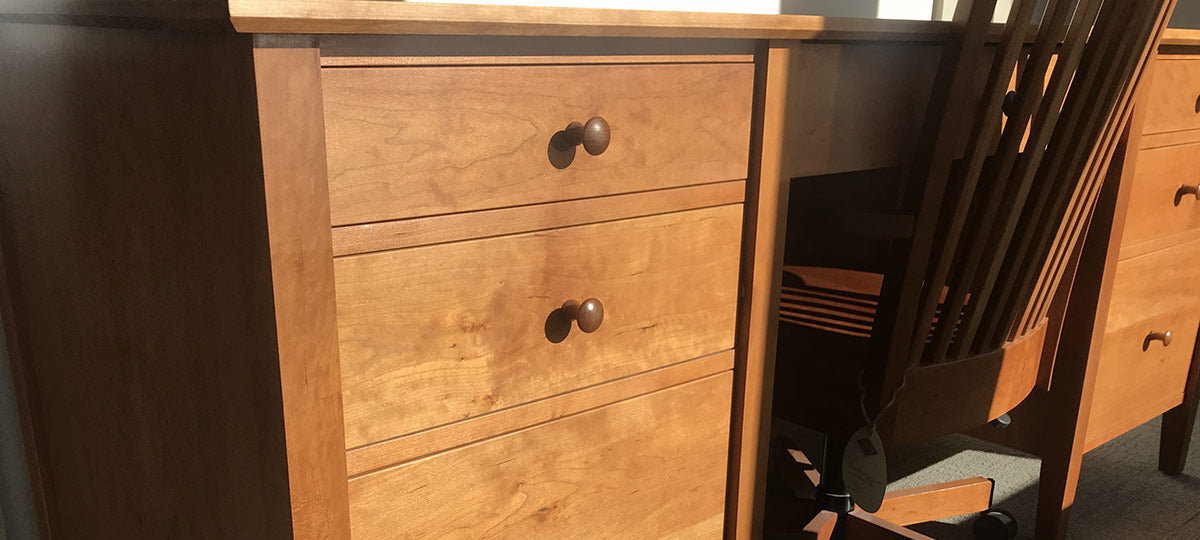
Shaker executive desk, built in cherry with a lacquer finish
You will find the lowest gloss, pre-catalyzed lacquer finish on many of our pieces at Chilton Furniture, including those built by Joy Valley Woodworks of Buxton, Maine. Lead finisher Charlie Westberry uses a lower-VOC-emitting and formaldehyde-free pre-catalyzed lacquer called EnviroMax. This lacquer is tested to withstand more than 25 of the toughest common kitchen and bath cleaning solutions.
POLYURETHANE
A cousin of varnish, polyurethane also provides an extremely protective top coat. Its characteristics vary depending on the base material. In addition to durability, oil-based poly is quite resistant to heat, water and chemicals and comes in a variety of gloss options including satin, semi or high gloss. Oil-based also has an amber tone that is especially evident in the sunlight, and brings out the richness of the wood. Water-based poly is a newer option. While a water-based finish will have a lower volatile organic compound (VOC) content (making it more environmentally friendly) and won’t add a color to your furniture, it won’t hold up as well to heat and chemicals.
SHELLAC
One centuries-old, tried and true finish is shellac. Made of an alcohol solvent combined with secretions from the lac bug of Southeast Asia, this finish dries as a glossy, hard top coat. Some builders prefer this finish for its durability and protection from abrasions and water damage, as well as its glossy clear or amber appearance and nontoxic, food-safe qualities. Shellac does have a few kryptonites, however, including heat and alcohol based liquids. Prevention of liquor and even cologne spills is key, and avoiding white heat rings from mugs and plates with coasters and trivets is suggested. For this reason shellac may not be the best finish for a kitchen table.
WAX
If beauty is a leading factor for your finish decision, a wax finish is a good place to start. It enhances the natural grains and pores of wood with a soft luster that will not yellow over time. Waxes do not penetrate or seep into wood, but provide a protective coating on top of it. This helps preserve wood in its natural color without oxidizing, but it does not particularly intensify the wood. For this reason, wax is often used as a top coat in combination with oil.
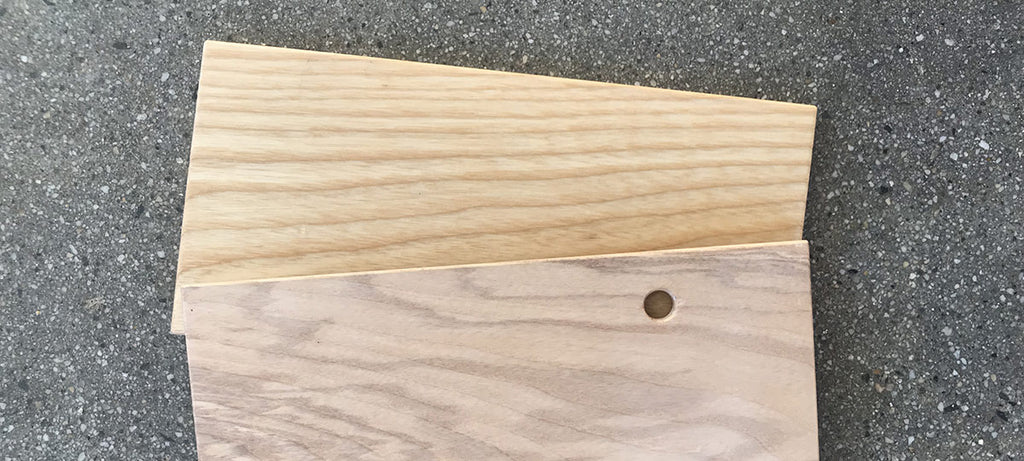
Wax and lacquer comparison, shown on ash
Wax is the perfect finish for your statement wood piece that will not be exposed to excessive wear or tear. The drawback to this finish is durability and maintenance. Wax does give a few minutes of resistance to clean up water spills, but lacks in protection from heat and scratches or dents. Additionally, wax should be invigorated yearly with a quick buff (dry cloth for matte finish, damp cloth for high-gloss). Keeping this in mind, wax is generally best used on hardwood shelving, display cases, picture frames and other low-wear items, or used as a top coat to a more durable finish, like shellac.
SOAP
A less commonly used, but creative alternative to wax, is soap. Similar to a wax coating, a natural soap flake and water mixture will create a matte, soft-to-the-touch finish, with a white or grey cast. As the coloring might suggest, soap is best used on light woods like maple, ash, or white oak, as the grains and rich colors of darker woods would be obscured by a soap finish. Though this finish doesn’t wear well to scratches, heat, or water exposure, it is simple to repair and rebuff every six-months or so, and is a safe option for loved ones at home as the “greenest” finish on the market. Best suited to those willing to invest the time needed for ongoing care.

Live edge coffee table, built in sugar maple with a lye and soap finish
OIL
Oil is the finish of choice for designer, woodworker and author Kevin Rodel. “Oil finishes have been around for hundreds of years, and have been used to protect and bring out the natural beauty of any wood species.” Most commonly found in two varieties, linseed and tung, these drying oils (the non-VOC-emitting variant) penetrate the wood and dry as a thin film once the molecules are exposed to air. As the oil is hand rubbed into the wood, it leaves a natural, yet luxurious rich finish that highlights the depth and dimensions of the wood grains. Most oil finishes will give your furniture some resistance to moisture, particularly when topped with a wax finish, and they are also flexible as wood expands and contracts with changing humidity. As with wax and soap, oil is not as protective from nicks and dings as other surface finishes, but for those willing to invest time and energy into proper maintenance, the look may be worth the trade off. According to Rodel, “an oil finish is easy to maintain and refresh after many years of use.” Simply clean the surface with "0000" steel wool and recoat to remove any scratches or water ring marks.
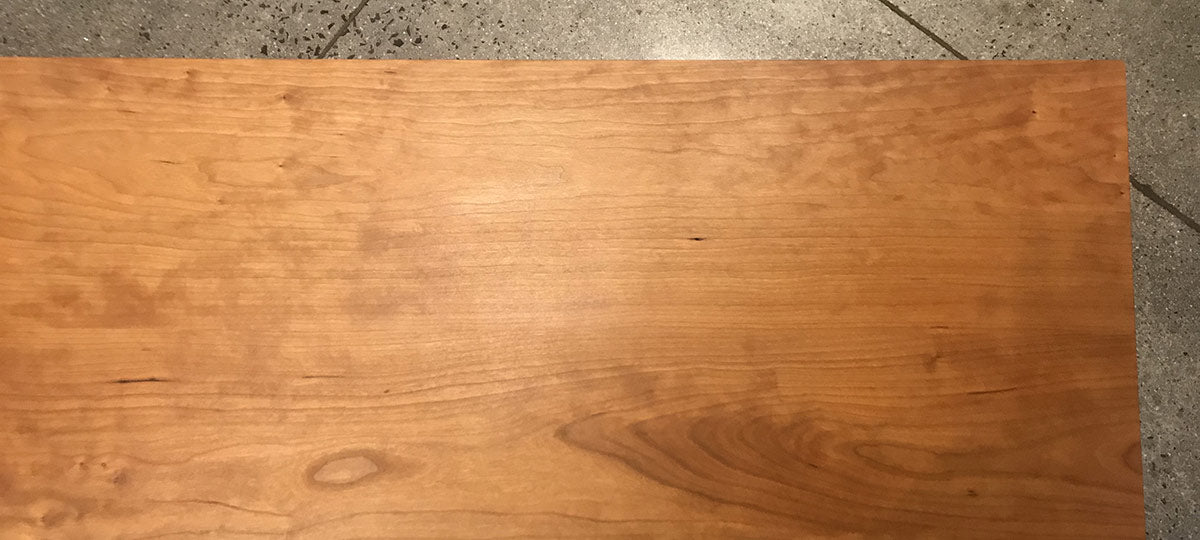
Union bench top, built in cherry with an oil and wax finish
Choosing a finish can be difficult. There are many options, each with their own benefits and drawbacks. They can even be combined and layered to capitalize on the strengths of multiple finish types. The finish you choose should depend on the look you want to achieve, the protection the piece requires, and the level of care and maintenance you are prepared to expend. At Chilton, we tend to use lacquer and conversion varnish, because of the overall protective qualities and ease of care for these finishes. Some of our pieces are also available with an oil and wax finish.

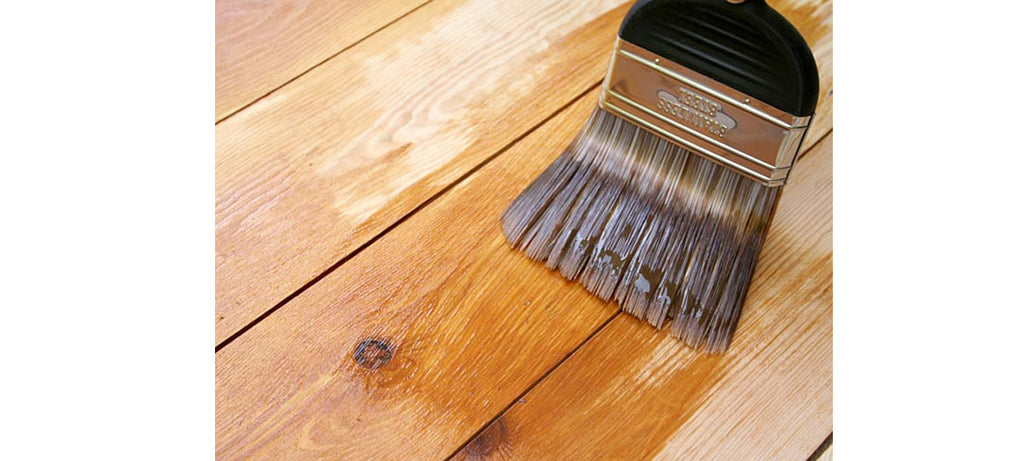
12 comments
Wondering if Laquere is still being used like on cheaper furnitures. My desk was less than $300and it wore down in a few years. Poly does NOT seem to ashier to it well. Wondering if there is a brush-on or, roll-on type of Laquere or , is spray the only option for Laquere. /.
I have a soap finished Skovby dining set in beech. Does anyone know where I can find wood soap in the US? I have been bringing it back from Denmark, but with COVID I am out and need to find a US supplier.
Which oil finish would you recommend? Tung, Danish, etc…???? Thank you
Informative post! Thank you for sharing this information with us I accidentally visited this site while looking for something else!, But Wow! It’s a good thing I came to this site.
It is delightful
Leave a comment